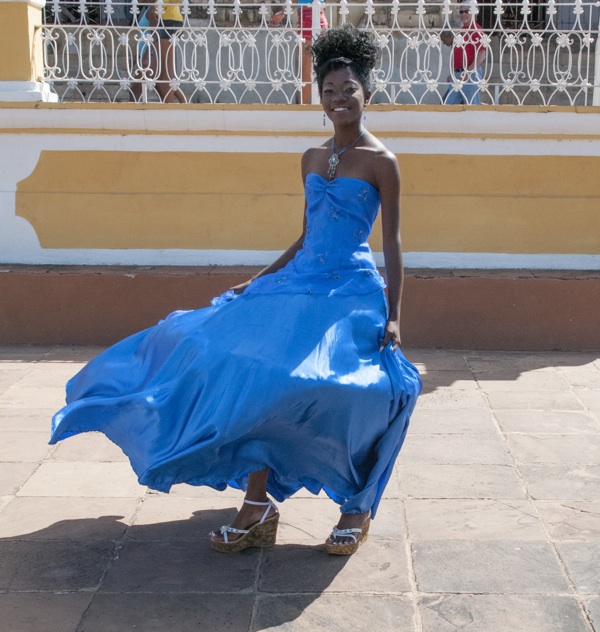
Story and photos by Lawrence Sherwin | NB Indy
Americans can now travel to Havana, Cuba, directly from Miami or via Cancun, Mexico, and those who make the 80-very-odd-mile trip across the strait will find an exotic, beautiful island rich in culture but fraught with stark, bitter contradictions.
Picture old Chevies, Fords and Buicks rumbling down narrow cobblestone streets lined with brightly painted colonial-style buildings.
Think Hemingway, fine rum, mojitos, daiquiris, and hand-rolled cigars.
Imagine a plaza filled with beautiful, exotically attired women and athletic gentlemen, all salsa dancing the night away to the rhythms of passionate musicians.
Dream of white sandy beaches gently massaged by warm, azure ocean ripples.
You can travel on modern, uncongested highways that cut through sugar cane fields, banana and citrus groves, old tobacco plantations and ranches. You visit quaint old towns like Trinidad that seem wonderfully stuck in the early 1900s, then drool over a lobster dinner larger than a politician’s ego, for less than $15.
This is the Cuba for tourists, international business folks and nouveau riche Cubans.
On the very dark side is desperate poverty: old buildings seem to crumble into giant heaps of rubble in front of you. In spite of billboards spouting revolutionary rhetoric about mythical heroes, Cuba is poor and struggling and some Cubans are much more equal than others. The average worker earns about $20 per month and cannot afford lobster dinners or a visit the very best places because they are PRIVATE.
There is no unemployment but there are few good jobs. We drank coffee in a cafe owned and run by a physician. Our tour guide was a lawyer.
There is a burgeoning middle class fueled by a voracious black market economy and by private entrepreneurs who pay fees to do business but pay no income tax: there is no IRS in Cuba!
The cigar and rum industries are owned by the government but run by private business enterprises. Six months ago, for the first time, Cubans were granted the right to buy and sell houses and cars.
The embargo, supported by 10 United States presidents, and prolonged by thousands of fanatical ex-Cubans profiting handsomely in Florida, excludes many food items. So, along with your lobster, you can slather American butter on your hot bread, sprinkle Tabasco on your beans, rice and ropa viejo, and sip Coca-Cola.
Yet the ultimate irony in the heart of Havana is in an architecturally anonymous, elephantine structure: the United States “interest” building. Yes, Americans are very interested in Cuba.
And with good reason. It is a place like no other – rich in culture, poor in means, a close neighbor across a vast and deep political gulf – and it beckons.
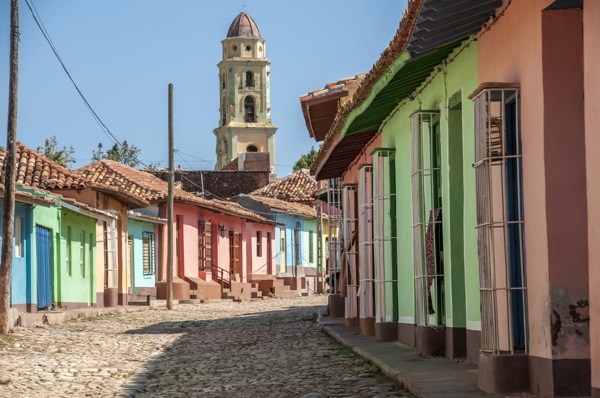
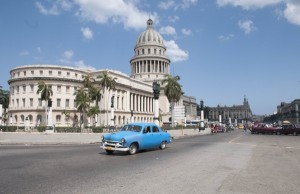
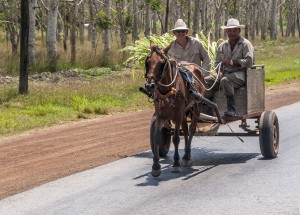
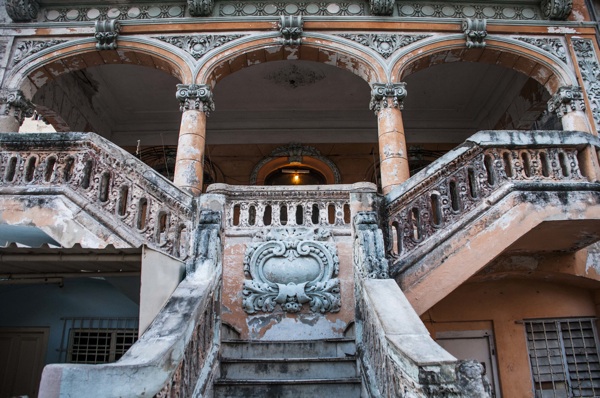
a





It is time for the President to finally make travel to Cuba as close to normal as he legally can:
1) Authorize a general license for self-attested people to people travel by individuals and families (ending the Jim Crow distinction with Cuban Americans) so they can use public transportation and stay in privately owned bed and breakfasts.
2) Authorize a general license for group travel organized by any IRS recognized not-for-profit organization and third party providers of accredited educational exchange
3) Authorize a general license for attendence at and organization of conferences in Cuba
John McAuliff
Fund for Reconciliation and Development
Great article Larry… 🙂
Great article and pics!
Very descriptive and persuasive article. I want to go!
hello lorenzo
good article
After reading this, I really want to go there!